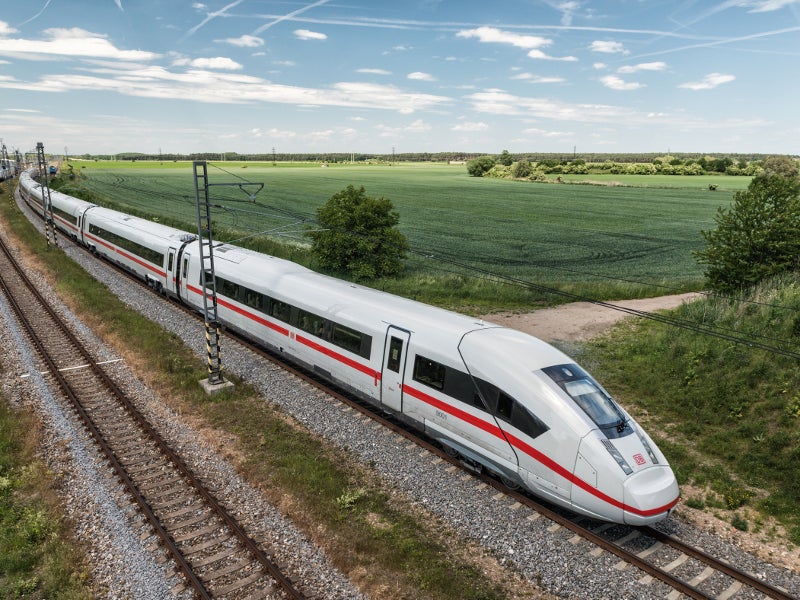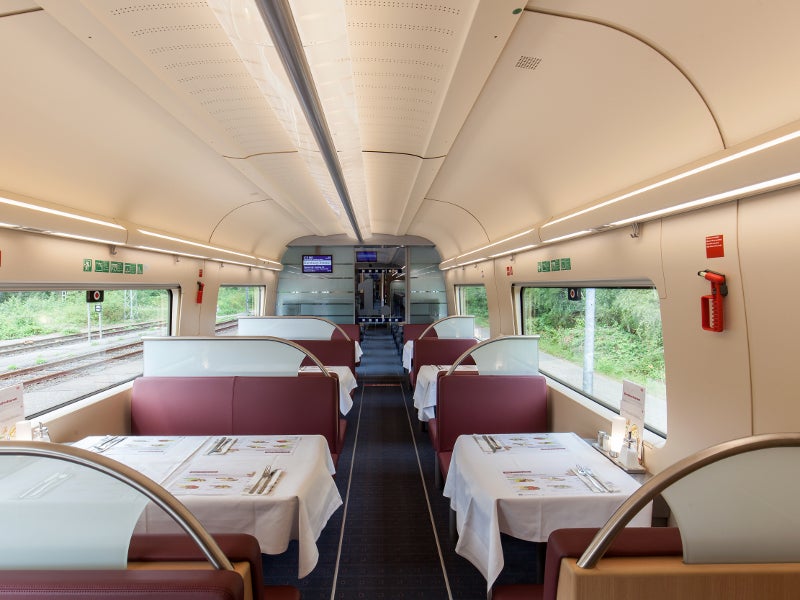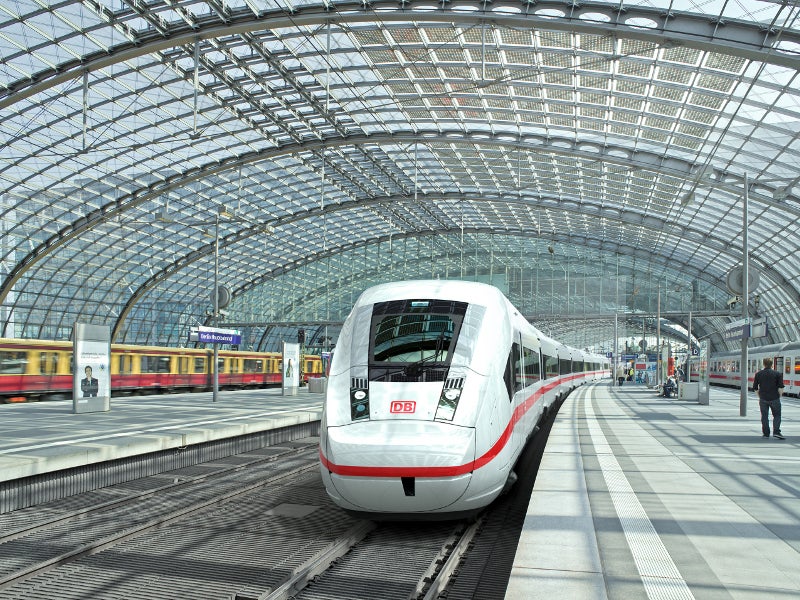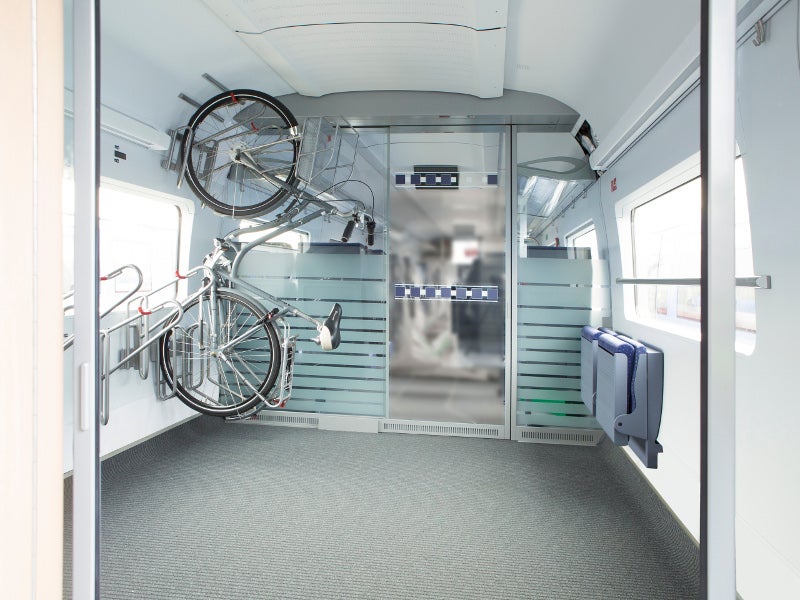Siemens ICE 4 is a new-generation high-speed train offering flexibility and optimal availability for intercity and long-distance service operators.
It is one of the most advanced and user-friendly upgrades of high-speed train travel.
The first operational ICE 4 train set was rolled out in Berlin in September 2016. The train received approval from the German Federal Railway Authority (EBA) for operations in Germany in September 2016. It will mainly replace the ICE 1 and ICE 2 fleet in service.
The ICE 4 made its inaugural journey on the high-speed line between Berlin and Munich in Germany in December 2018.
Orders and deliveries
Deutsche Bahn (DB) and Siemens signed a framework agreement for 300 new long-distance trainsets in May 2011 in seven-car and 12-car configurations.
In October 2018, DB placed an additional order for 18 seven-car ICE 4 trainsets and 50 power cars in order to convert the earlier ordered 12-car sets to a 13-car configuration. Worth €610m ($692m), the vehicles will be jointly delivered by Siemens Mobility and Bombardier Transportation.
Deliveries of the seven-car trainsets under the new order will begin in 2023, while the 13-car trainsets will be supplied after the delivery of 50 12-car trains in 2021.
The total orders from DB for ICE 4 trains are currently 137, resulting in a total of 1,511 cars to be delivered in 50 12-car, 50 13-car, and 37 seven-car trainset configurations. The trains will run across Germany, Austria, and Switzerland.
In November 2018, ICE 4 received approval from the EBA for operations with the European Train Control System (ETCS). The ICE 4 fleet will be fitted with ETCS Level 2 Baseline 3 system for cross-border operations on the Basel-Bad route in Switzerland.
Siemens ICE 4 train design and features
The ICE 4 train is available in two basic configurations, including 200m-long seven-car unit and 346m-long 12-car unit with each individual steel-bodied car measuring up to 28m. It features minimal gangways, components, and bogies, resulting in increased car capacity.
The ICE 4 features power-car solution, which integrates an entire traction system in one car, including the transformer, traction converter, traction cooling unit, and four traction motors. The mix of power cars and unpowered cars offers high modularity and flexibility to create different trainset configurations.
The lightweight ICE 4 complies with the latest TSI PRM standards. It features an integrated air conditioning system.
The train can be fitted with five to 14 cars to create a range of configurations according to customer requirements. The different types of cars available for integration include the end unit, the power car, the centre car, the dining car, and the service car.
The 12-car unit has the capacity to accommodate 830 passengers and can run at a speed of 250km/h on DB’s rail network.
Interiors of ICE 4 train
The ICE 4 trainsets feature empty tube principle, which provides larger usable floor space. The modular layout of the train further offers space for accommodating new requirements.
The seats offer a high degree of interior flexibility and can also be mounted on C-rails for movement. Each seat is installed with reservation indicators and electrical outlets, while the first-class seats feature reading lamps.
The train also features a galley with an open counter area. Each car has large windows offering panoramic views for the passengers. Innovative lighting installed in the cars provides uniformity across the train, while the colour and intensity of the lights can also be adjusted to the time of day.
The train has a dedicated space for disabled passengers for storing up to four wheelchairs and offers eight bicycle racks. The ICE 4 is also equipped for GSM mobile connectivity and mobile internet access.
Traction and power
The drive system of each power car integrates four drive motors, the traction cooling system, transformers, and power converters.
Each power car delivers a traction output of 1.6MW, while the seven-car and 12-car trainsets respectively generate a traction power of 4.95MW and 9.9MW each.











